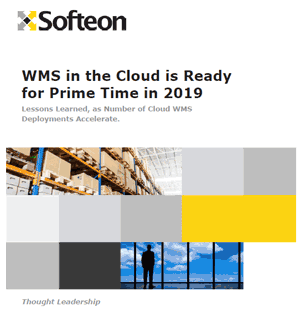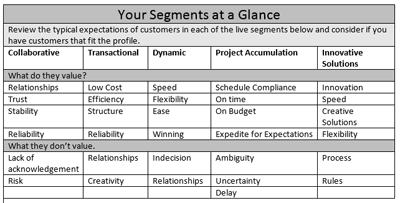Transforming Supply Chains
I was going to milk the annual CSCMP conference for one last column this week, winding things up with a summary of additional breakout sessions - but I changed my mind.
One of the nice things about my job is that fairly often, books just show up in my mailbox, with publishers hoping the freebie will lead me to favorably mention the work or even do a full review. Most of the works sent my way are of course supply chain oriented, but I receive books on all manner of business topics.
Not too long, Pearson sent me a paperback copy of Transforming Supply Chains by Dr. John Gattorna and his work partner Deborah Ellis, both of Australia. Gattorna is a pretty well-known figure, gaining some fame as a consultant and prolific author (more on that in a second) from posts at universities in both Australia and the UK.
| GILMORE SAYS: |
The second key point is that customer buying patterns can change over time - perhaps suddenly.
WHAT DO YOU SAY?
Send us your
Feedback here
|
He recently received the Distinguished Service Award from CSCMP, and is generally credited with inventing the term 4PL to describe a logistics service provider that just manages a portfolio of other LSPs for a client.
All that as prelude to my deciding to postpone the CSCMP breakout summaries this week in favor of a review of Transforming Supply Chains. There are lots of books on supply chain transformation, but this one is very different, as we'll explore in just a bit.
But I will start the review by noting this isn't exactly a new book. Rather, it is the latest extension of several books Gattorna has authored, the latest one being an edition of Dynamic Supply Chains in 2015, following the original in 2011, which themselves were extensions of 2006's Living Supply Chains. All of these are very good books. Gattorna and Ellis' latest work takes things a bit further.
This is a "deep" book, I think even more so than its predecessors, and difficult to summarize. I will give it my best. The predominant message is again that companies must segment their customers or potential customers by their dominant buying behaviors, and align supply chain processes and services from this "outside in" view, flexibly adjusting the value prop as those buying behaviors change over time.
Let's see if I can explain that.
The authors do a good job of summarizing the book's strong point of view in the Preface, where they write that it is "a critical necessity to rise above the "functional" thinking that has pervade the supply chain since its inception, epitomized by the "one size fits all" configuration of yesteryear."
Taking this thought much further, the authors say most companies only pay lip-service to being customer-centric. When it comes to supply chains, in most companies they have just sort of evolved over-time, pretty much built to serve most or all customers in the same way.
In the Introduction, the book describes a number of new challenges facing today's supply chain execs. I'll pick out a couple of them. One is the potential for the "Uberization" of the supply chain, under which many assets are shared, driving up utilization and thus lowering cost. While we are early in the curve, the authors expect the ascent to be rapid.
Another challenge is increased volatility, which is in fact proven, if you will, by something called the Supply Chain Volatility Index, which has risen substantially over the past decade.
The way to manage volatility is through building more flexible supply chains - but achieving that flexibility comes at a cost, and determining the ROI on that investment is tricky indeed.
Be forewarned, early the book, the tone gets rather academic, referencing research far from the supply chain domain that the authors used to develop their Dynamic Alignment model that is the heart of the book.
So let's wade past the academic foundation and get to the core of the argument: customers should be segmented by their buying behaviors, which is very different than how most companies segment customers, using size, industry, channel type, etc., as attributes.
Gattorna has done the hard work for us, saying it turns out there are five primary buying types, as illustrated in the graphic below, which SCDigest re-created from fuzzy graphic in the book.
As can be seen, those five buying types are: collaborative, transactional, dynamic, project-oriented, and innovative. Not surprisingly, each buying type values different things and performance levels, as listed in the chart.
Two important points then follow.
First, a given company will likely have customers across multiple of these segment types, maybe even all five. The key to success is to build supply chain capabilities that align with each buying segment's values.
So, for example, a company likely has both transactional and innovative customers across industries and other traditional segmentation filters. Transactional buyers will value close to the same supply chain offerings across industry sectors.
A subsequent graphic in the book, in fact, lists the supply chain attributes each segment typically values. Transactional buyers, for example, look for such results as delivery consistency, logistics efficiencies, and having multiple sources of supply, and are also content with more adversarial relationships, etc.
So as most of you have probably already perceived, this framework demands companies design and execute different supply chain services and performance that align with the values of each of these five segments they want to serve.
This is a very different way to think about segmentation for sure. I am not sure the author's agree, but it seems to me you could have different buying patterns or segments even within a single customer, based on products purchased, state of the business unit (e.g, internal ecommerce start-up), etc.
The second key point is that customer buying patterns can change over time - perhaps suddenly. So to take an easy example from me, retailers that were on solid financial footing just a few years ago might have had balanced views on service versus cost for truck transportation. But as their financial positions deteriorated, the pendulum swung to be much more focus on rates, even if service inevitably suffered as a result.
Thus, the need to be dynamic, shifting the value prop and supply chain offering to whatever buying model a customer changes too, whether that is a long term or temporary transition.
The authors also argue all this should lead to different views of supplier segmentation as well, writing that "It is our very strong view that the procurement function must act in unison with the strategies that address the customer buying behaviors identified at the front end of the business."
In other words, find suppliers that are well aligned say with the values of transactional buyers for that segment.
I am out of space, and just one-third through the book here. The rest gets into a lot more of how to do this, which I will cover in two weeks.
But does it work? It's different thinking for sure, though it certainly has a certain ring of truth. I will just relay the short case study in the book on a joint venture between agricultural companies Teys Bros and Cargill.
The companies used this segmentation technique to understand their customer base and value-drivers. Part of that resulted in realizing that there was a large segment of customers that were in fact collaboration oriented and lost in the shuffle of a monolithic supply chain. Overall growth, the authors say, has been strong at the business after this approach.
More on Transforming Supply Chains soon. I will be upfront in saying the book requires putting on your thinking cap, but think there are real rewards for those that do.
What is your reaction to the Dynamic Alignment model? Does the new approach to segmentation make sense? Let us know your thoughts at the Feedback section below.
|















